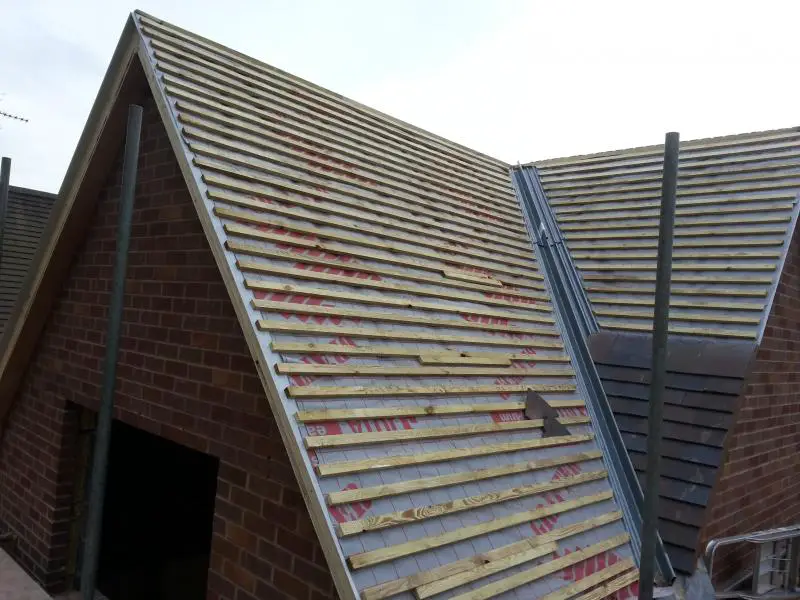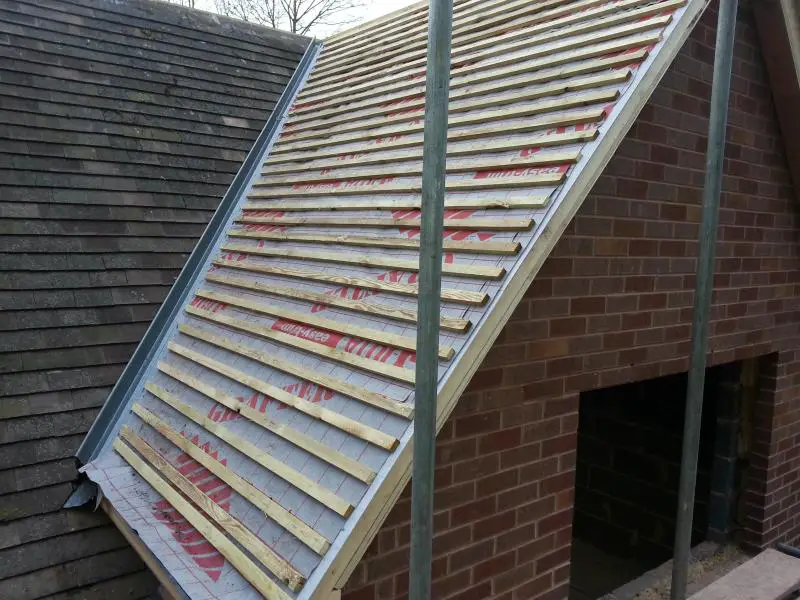hi
my carpenter has installed my tile and battens on my hipped roof extension ready for me to tile it. i'm using vallet tiles and granny bonnets.
the tile battens don't seem to be in line, as i'm using granny bonnets would that be ok or cause a problem as they seem to be out by quite a bit? see photo
also the new battens don't match the height of the existing roof battens. should these be the same height? see other photo
he says you won't notice it once its tiled but i'm not so sure.


any advice appreciated, thanks in advance
my carpenter has installed my tile and battens on my hipped roof extension ready for me to tile it. i'm using vallet tiles and granny bonnets.
the tile battens don't seem to be in line, as i'm using granny bonnets would that be ok or cause a problem as they seem to be out by quite a bit? see photo
also the new battens don't match the height of the existing roof battens. should these be the same height? see other photo
he says you won't notice it once its tiled but i'm not so sure.
any advice appreciated, thanks in advance





